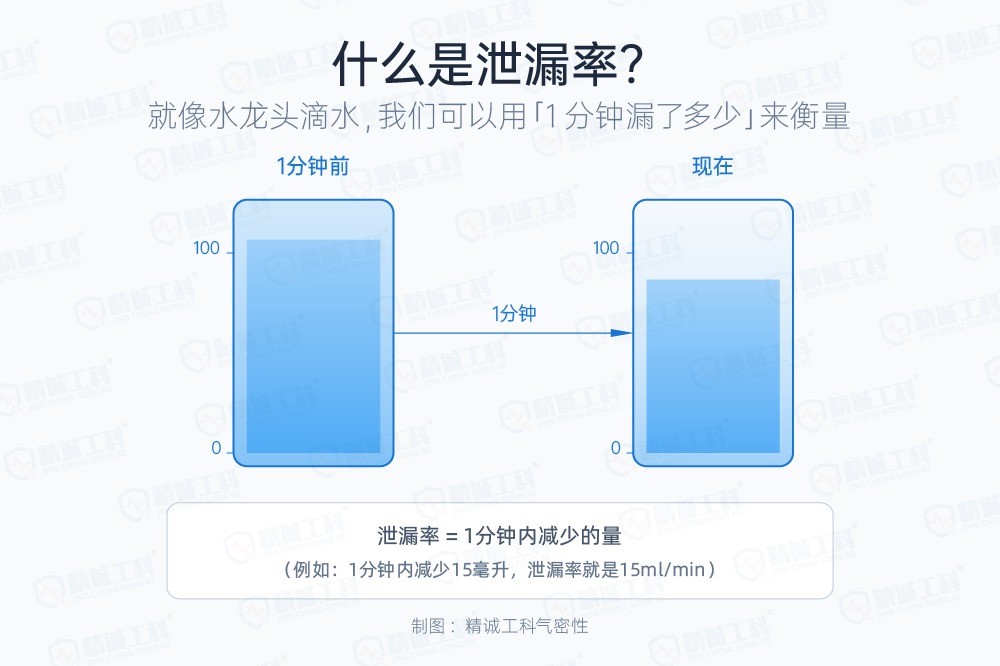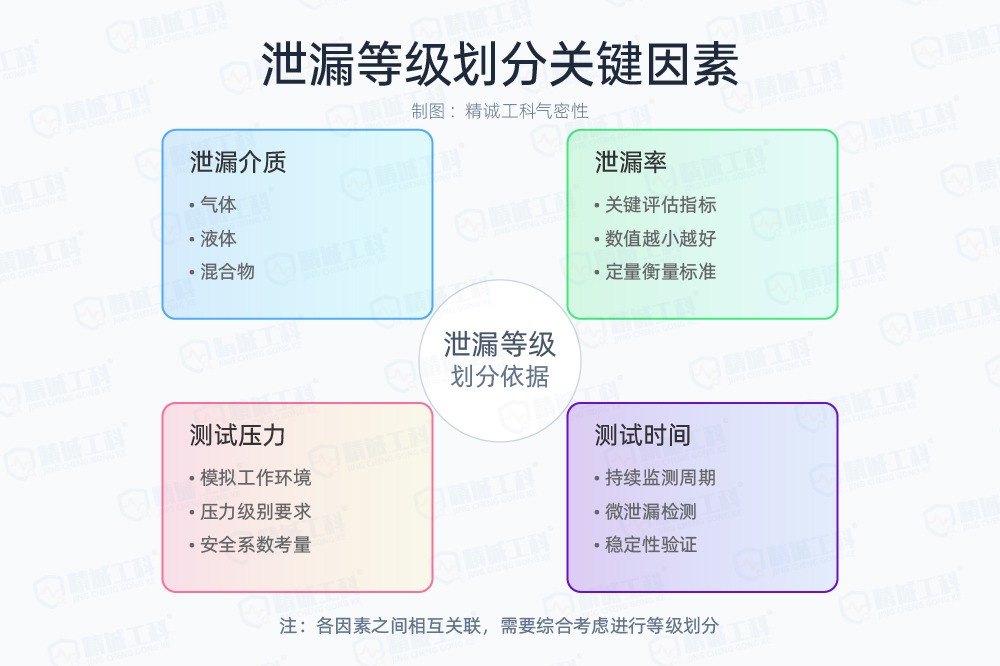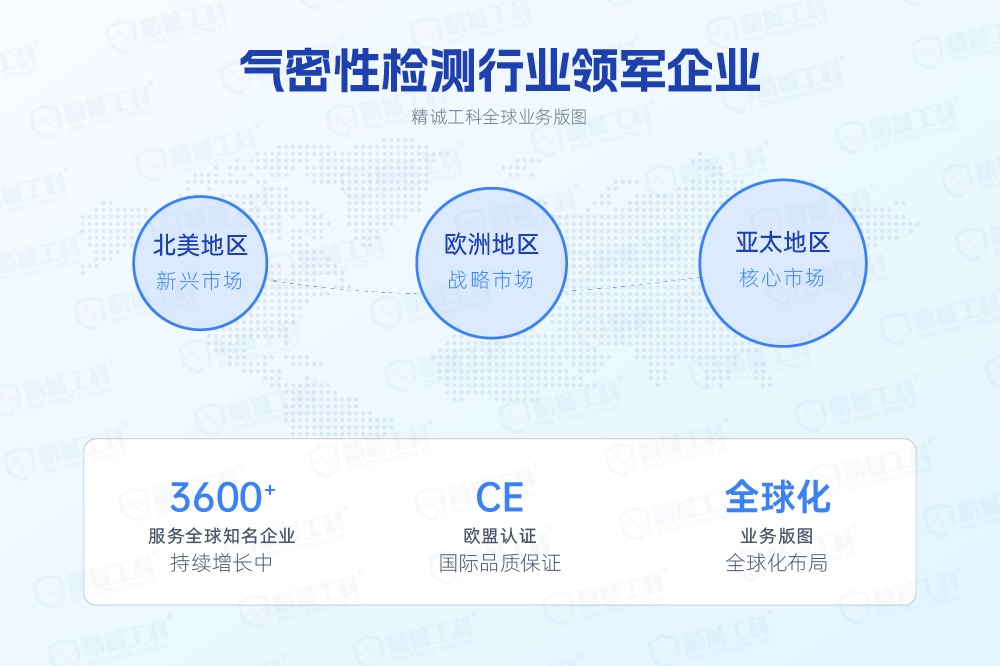In industrial production, the sealing of a product is directly related to its performance, life and safety.
Sealing leakage test as an important quality control means, designed to detect the ability of the product to prevent gas or liquid leakage. Different application scenarios have different requirements for product sealing, so the leakage test needs to be graded. In this article, we will analyze the nature of leakage, explain the standards and methods of leakage test rating, and introduce the professional solutions provided by Jingcheng Industrial Technology.
I. The nature of leakage: the migration process of gas molecules
From first principles.Leakage is essentially a migration process of gas molecules driven by differential pressure through tiny pores or gaps in products or equipment. This migration is affected by the nature of the gas (e.g., viscosity, density), the shape and size of the pores, and the differential pressure.

Leakage rate is an important indicator of the extent of leakage, which indicates the amount of gas passing through the leakage channel per unit of time.
II. Leakage test rating criteria
The rating of leakage tests is based precisely on the quantification of the leakage rate. Different application scenarios have different requirements for product tightness and therefore require different leakage rating standards.Equipment used in aerospace, for example, tends to have much higher sealing requirements than everyday consumer products.
There is no uniform standard for the classification of leakage levels, but rather it is based on the specific needs of different industries and products.

In general, leakage levels are classified by considering the following aspects:
- Leakage medium: The leaking medium can be a gas, a liquid or a mixture. Different media have different properties and have different effects on leakage.
- Leakage rate: Leakage rate is a key indicator of the degree of leakage. The smaller the leak rate, the better the seal.
- Test Pressure: The test pressure simulates the pressure to which the product is subjected in the actual working environment. The higher the test pressure, the higher the requirements for sealing.
- Test time: The longer you test, the more you can find tiny leaks.

Based on these aspects, different criteria for leakage levels can be developed.
For example, in some industries, leakage levels may be categorized into classes, each corresponding to a range of leakage rates. Only products that reach a specific level are considered acceptable.
III. Common Leakage Test Methods
Common leak test methods include:
1. Water immersion (bubble method): Immerse the product under test in water and observe for bubbles.
2. Pressure decay method: The presence of leaks is determined by monitoring the change in pressure inside the product under test over time.
3. Differential pressure comparison method: Leakage is accurately determined by comparing the pressure difference between the standard and the product under test.
4. Tracer gas method: Leak detection using a tracer gas such as helium, which accurately measures the amount of leakage by detecting the concentration of helium ions with high sensitivity.
The choice of which leakage test method to use needs to be based on a combination of factors such as the characteristics of the product under test, the leakage requirements and the cost of the test.
IV. Jingcheng Engineering: Professional Leakage Testing Solution Provider
Conducting effective leakage tests can help companies improve product quality, reduce losses due to leakage, and enhance market competitiveness.
With more than 10 years of industry experience, Precision Engineering Gas Tightness can provide you with customized leak test solutions and high-quality testing equipment, includingAirtightness Tester,Waterproof Tester,Burst Tester,Leak test equipment,Respiratory Cycle Testeretc.
We are committed to providing solutions comparable to imported quality at domestic prices to help you reduce costs and improve efficiency.

After years of development and accumulationPrecision Engineering has become a well-known domestic and internationalLeak Detector BrandsWe serve over 3,600 customers in Asia Pacific, Europe and North America, and our products are CE certified to better serve the international market.
Choose Precision Engineering to protect your product quality from potential risks. To learn more about leak testing, please visit our website or feel free to contact us.




